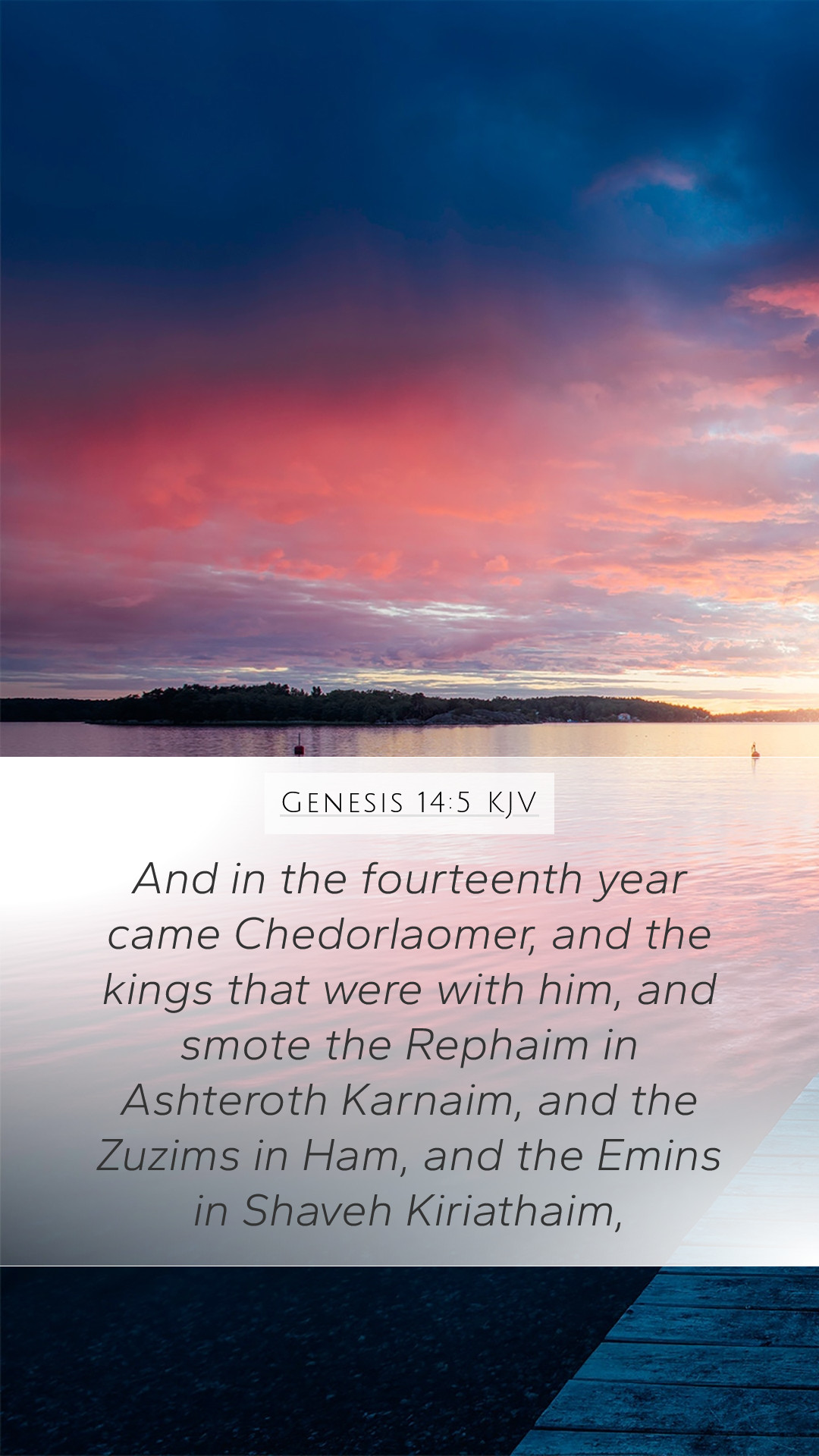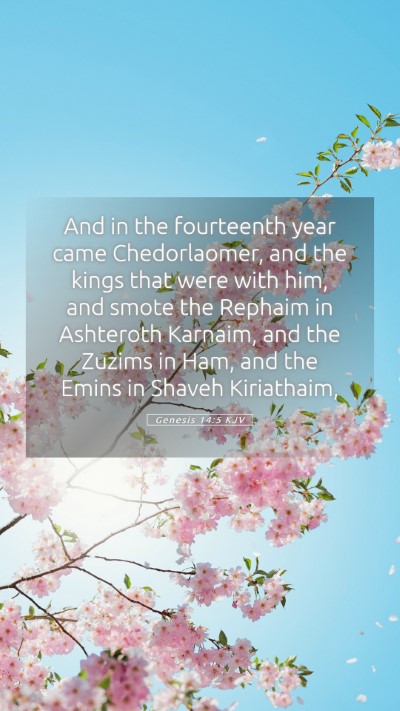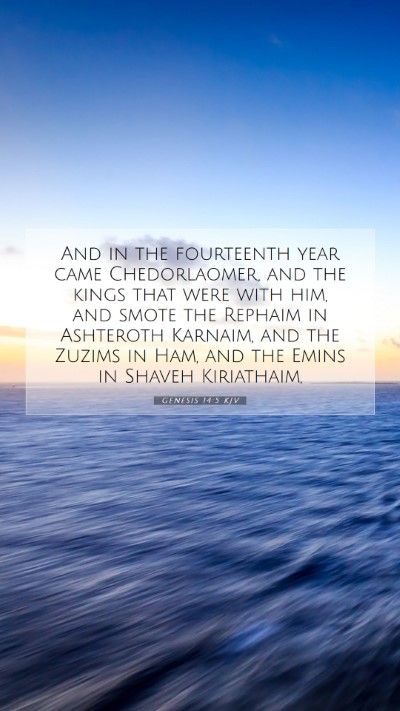Bible Verse Commentary on Genesis 14:5
Genesis 14:5: "And in the fourteenth year came Chedorlaomer, and the kings that were with him, and smote the giants in Ashteroth Karnaim, and the Zuzims in Ham, and the Emims in Shaveh Kiriathaim."
This passage marks a critical moment in early biblical history, presenting a snapshot of military encounters during the time of Abraham. As we explore this verse, it becomes essential to delve into several layers of meaning and historical context, which can be captured through thorough Bible study insights, deep biblical exegesis, and scripture analysis.
Understanding the Context
The events described in Genesis 14 follow the alliances and conflicts among regional kings in the land of Canaan. Chedorlaomer, the king of Elam, leads a coalition of kings to subdue various tribes and territories. This serves to highlight not only the power struggles of the time but also the geopolitical tensions that set the stage for Abraham's subsequent interventions.
Verse Summaries from Public Domain Commentaries
-
Matthew Henry's Commentary
Matthew Henry emphasizes the significance of the fourteenth year of the reign of Chedorlaomer, noting how it represents a time of prosperity for those involved in the conflict. This year marks the culmination of military build-ups, aimed at subduing rebellious factions. Henry further explains that the 'giants' referred to in this verse may suggest mighty warriors or formidable opponents, thus illustrating the urgency and seriousness of the battle.
-
Albert Barnes' Notes
Albert Barnes comments on the historical implications of this conflict. He remarks that the giants and various tribes mentioned were likely involved in resisting the authority of Chedorlaomer's coalition. Barnes notes that this verse serves as an introduction to the ensuing conflict, emphasizing the background of the region that sets the stage for Abraham's action later on in the chapter.
-
Adam Clarke's Commentary
Adam Clarke provides insight into the geographical locations mentioned, suggesting that understanding their locations is crucial for grasping the narrative's richness. Clarke also highlights the significance of the names given to the tribes (like the Emims and Zuzims) as reflecting a historical backdrop and the diverse peoples inhabiting Canaan, each with their own lore and traditions.
Thematic Insights
-
Military Conflict and Sovereignty:
This verse depicts the struggle for dominance among kings and nations, a theme prevalent throughout the Old Testament. Understanding such conflicts helps in drawing parallels to the spiritual battles faced within the Christian life today.
-
God's Sovereignty:
The unfolding events remind readers of God's sovereign hand over the affairs of nations and individuals, implying that even in battles and turmoil, divine providence is at work.
-
Judgments on Rebellion:
The military campaigns depicted are also a form of divine judgment against those tribes that opposed the established authority of God’s chosen lineage, framing them within a broader biblical narrative of obedience and rebellion.
Applying the Insights
As we reflect on Genesis 14:5, we can glean several applications for personal faith journeys:
-
Understanding Significant Conflicts:
Recognizing the importance of spiritual battles in our lives, just as territorial disputes illustrated the broader conflict between good and evil in biblical history.
-
God’s Ongoing Guidance:
Trusting in God's leadership amid conflict, knowing He remains sovereign over our struggles, directly relating to understanding Scripture.
-
Historical Context Augmentation:
Emphasizing the importance of historical context in interpreting difficult passages for Bible study groups, which demonstrate how past events resonate with current spiritual truths.
Related Bible Cross References
- Genesis 14:1-2: The outline of the kings and their territory.
- Joshua 12:4: Reference to the kingdoms defeated by the Israelites.
- 1 Chronicles 1:10: Chedorlaomer's lineage and historical significance.
Conclusion
In conclusion, Genesis 14:5 provides a multi-dimensional perspective into the historical and theological background of early biblical conflicts. Through the analysis and interpretations offered by esteemed commentators, one can cultivate a deeper understanding of this scripture. Engaging with this text fosters a greater appreciation for the complexity of biblical narratives and their relevance to contemporary faith contexts.


